Welcome to Singapore! As you begin your expat journey and settle into daily life, you’ll soon realize that eating out at a hawker centre is much more than just grabbing delicious food—it’s diving into a vibrant community tradition and one of the most important elements of expat life here. Hawker centers are woven into the city’s identity and serve as gathering places where locals and newcomers alike share stories, flavors, and a love for food.
On your first visit to one of Singapore’s hawker centers, expect a wave of wonderful chaos: the snap and shimmer of woks, the rich steam wafting from food stalls, and the chatter of customers lined up for noodles, satay, or a plate of Char Kway Teow. The scene is alive with the world’s greatest collection of street food vendors and a dizzying array of local dishes, from Indian food and Hainanese Chicken Rice to secret “hidden gems” that keep regulars coming back. Whether you’re near the Central Business District, City Hall, or along Orchard Road, an open air food court is never far away.
Understanding Hawker Centres
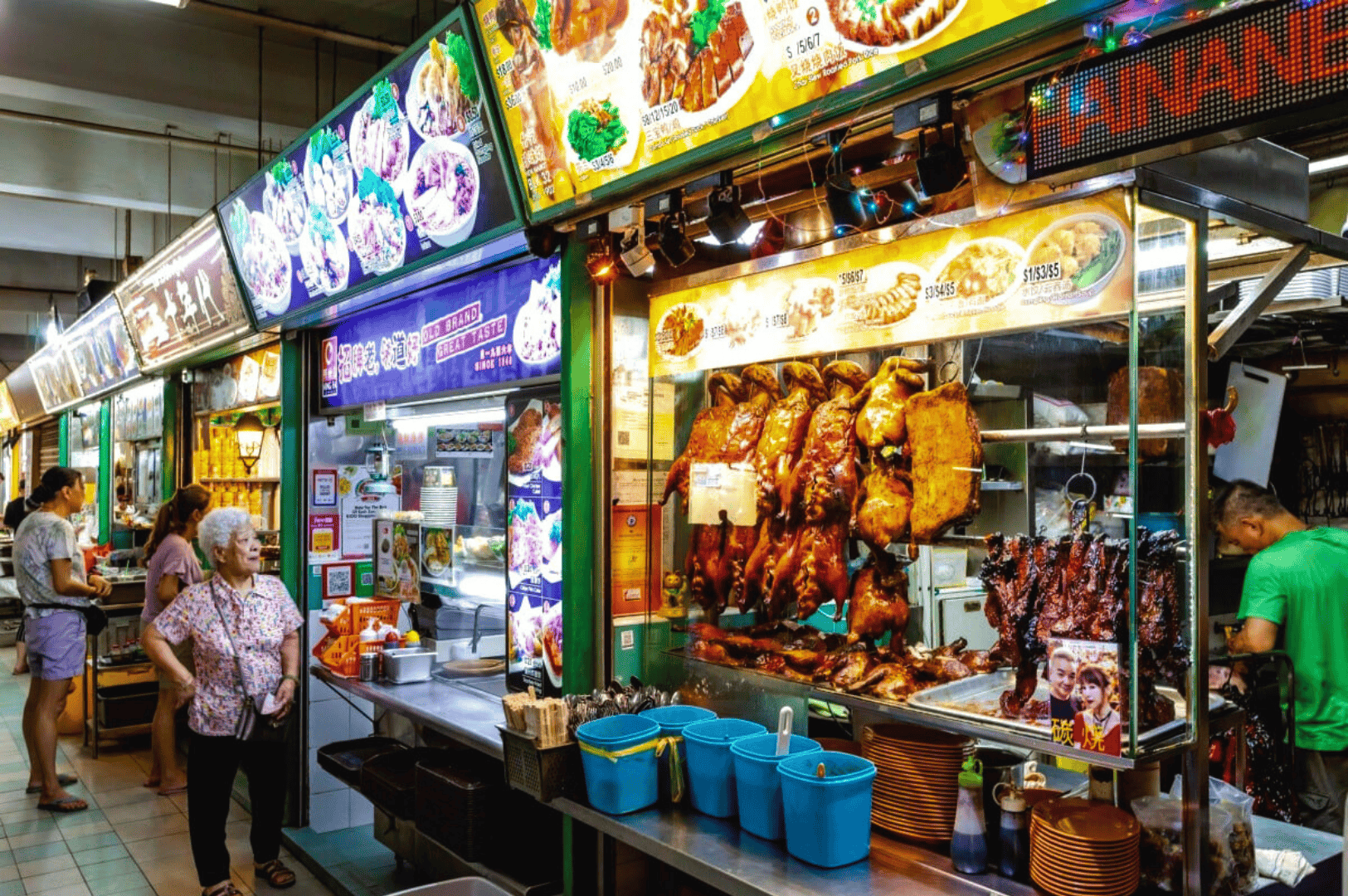
Singapore’s hawker centres emerged as a government initiative to regulate hygiene and provide affordable dining for the masses, uniting thousands of street food vendors under one roof. This commitment to regulation and quality resulted in a uniquely Southeast Asia dining concept that balances convenience, flavour, and history. It’s thanks to this vision that locals, visitors, and expats enjoy delicious food, usually within a short walk of the nearest Mass Rapid Transit (MRT) station.
There are traditional centers like Airport Road Food Centre, known for legendary Char Kway Teow and other stalls with decades-old recipes, and modern icons like Lau Pa Sat in the Central Business District, with its recent renovation and stunning Victorian design. Hawker centers differ from typical food courts and restaurants—there’s no table service; instead, you navigate a variety of food stalls that stand side by side, proudly displaying NEA cleanliness ratings. You’ll often find most stalls are still cash-only, though Lau Pa Sat and similar centers are now embracing cashless options.
Navigating the Hawker Centre Experience
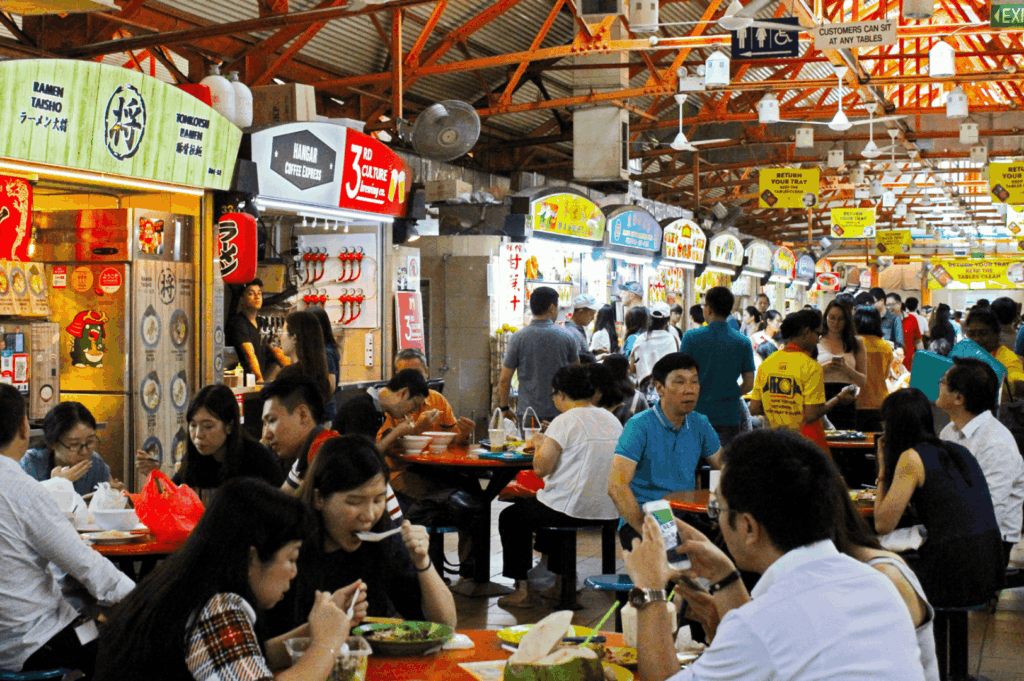
A key tip in any hawker center guide: seating and choping. In the open air food courts of Singapore’s hawker centres, “chope” culture is an unspoken but crucial rule—reserve your seat with a tissue packet or umbrella before you head off to order at your chosen hawker stalls. This helps you claim your spot during the competitive lunch rush, especially at must visit spots like Maxwell Food Centre or Tiong Bahru Market.
Take your time to walk the aisles and check out the food stalls, each offering different local dishes. The best hawker food is often found by following the longest queue or eyeing the busiest spots during peak business hours. Since Singapore’s hawker centers are typically packed at lunch, timing your visit right means you avoid the crowd and enjoy your meal in comfort. Scan each food centre’s NEA placards and cleanliness ratings for additional peace of mind.
Ordering Like a Local
- Ordering in Singapore’s hawker centres is an art. Start off by addressing the food stall owners as “uncle” or “auntie”—it’s friendly and shows respect. For example, “One Hainanese Chicken Rice, please!” or if you’re in the mood for Indian food, try “One biryani, less spicy.” Don’t forget to specify if you want your meal for takeaway (“da bao”) or if you’re dining in. Most stalls display clear photos and prices, making it easy for expats from any home country or international schools to feel at home.
- Payments are straightforward: many traditional food stalls still prefer cash, though you’ll encounter cashless payments at places like Lau Pa Sat, especially since the push for safer, quicker transactions. Portion sizes are generally generous, and sharing with friends is common, ensuring expat packages go further while supporting your appetite for Singapore’s hawker food.
Hawker Centre Etiquette
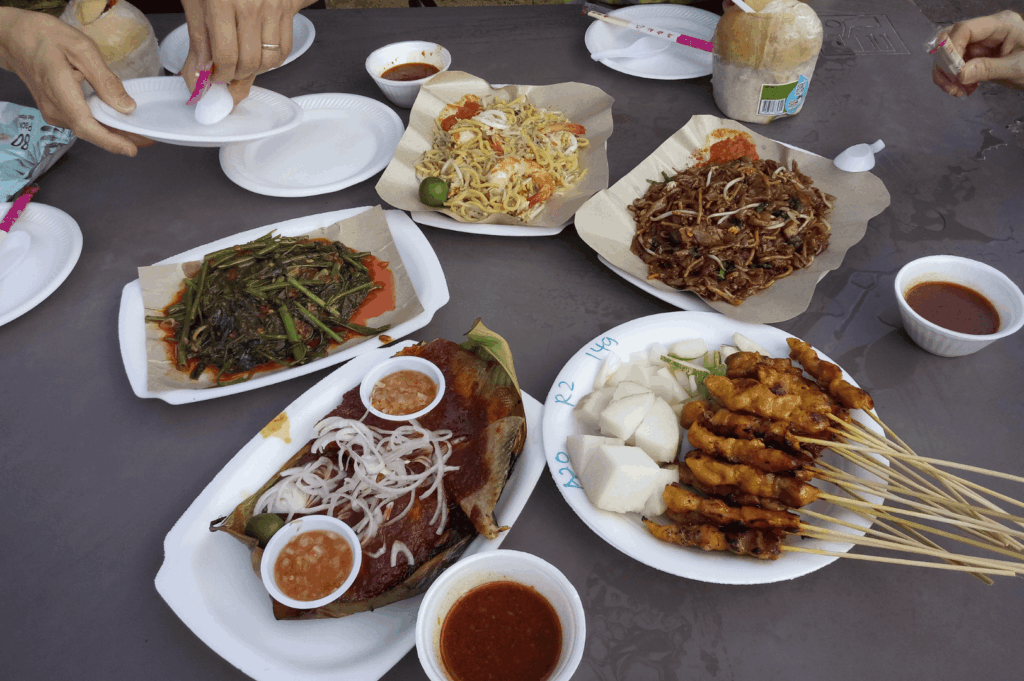
Being aware of hawker center etiquette shows you care about Singapore’s hawker culture. Always return your tray to the proper station after eating—it’s mandatory, not just good manners. Sharing tables with strangers is typical when the food centre is busy, and giving a polite nod or smile makes it easy to meet new friends. Tips are not expected, as pricing is net and affordable. Try not to linger when seats are needed—keep in mind that everyone wants a taste of these hidden gems, especially during lunch rush or after work hours in places like Tanjong Pagar or Marina Bay.
Must-Visit Hawker Centres and Food Centre in Singapore
To truly experience Singapore’s best, head to these standout hawker centres:
- Lau Pa Sat: A crown jewel of the Central Business District, famed for “Satay Street” (Boon Tat Street). The scenery, central location, and satay stalls make it a popular business lunch or after-hours dinner destination.
- Maxwell Food Centre: Right in Chinatown, this legendary spot beloved by Anthony Bourdain is perfect for discovering Singapore’s hawker identity. Don’t miss the world-famous Tian Tian Hainanese Chicken Rice or the many stalls selling local noodle dishes and Southeast Asia treats.
- Airport Road Food Centre: Known for delicious Char Kway Teow and other classic offerings, a must for those moving abroad who want real hawker food alongside locals.
- Tiong Bahru Market: Upstairs from the wet market, this food centre brings together amazing Hokkien Mee, Nasi Lemak, and more in a family-friendly space conveniently located near international schools.
- Chomp Chomp Food Centre: Another favourite for expats and locals, particularly at night for satay, Hokkien Mee, and an electric community vibe.
Whether you’re living near Orchard Road or in Little India, Singapore’s hawker centres are an essential part of day-to-day life.
Essential Singaporean Dishes to Try: Hainanese Chicken Rice, Char Kuey Teow and More.
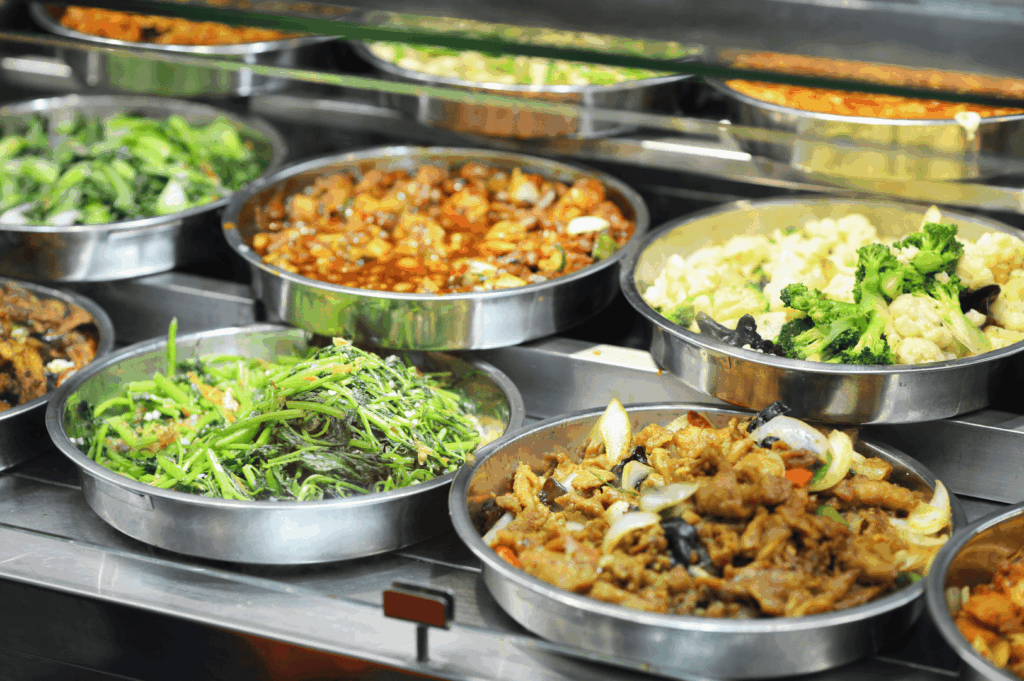
A real hawker center guide would be incomplete without sharing the best local dishes:
- Hainanese Chicken Rice: National treasure, available at most stalls, best at Maxwell Food Centre and Tian Tian stall.
- Char Kway Teow: The smoky, sweet noodle dish everyone craves at Airport Road Food Centre and many other stalls across the city.
- Satay: Marinated meat skewers grilled to perfection—check out Lau Pa Sat’s Satay Street for an iconic experience.
- Laksa & Nasi Lemak: Fragrant, spicy favourites you can find in almost every food centre.
- Chilli Crab: Usually served at specialty food stalls, but a true must-try for new arrivals—soaked up with mantou buns.
- Indian Food: Dosa, roti prata, and biryani abound—Little India, Tekka Centre, and other stalls across town are full of flavour.
- Hokkien Mee: Wok-fried noodles with seafood and a dash of lime—a taste of Singapore hawker food heritage.
If you’re feeling adventurous, ask the auntie or uncle what’s their hidden gem or “other stalls” worth visiting—it can lead you to undiscovered local dishes you’ll love.
Navigating Dietary Restrictions
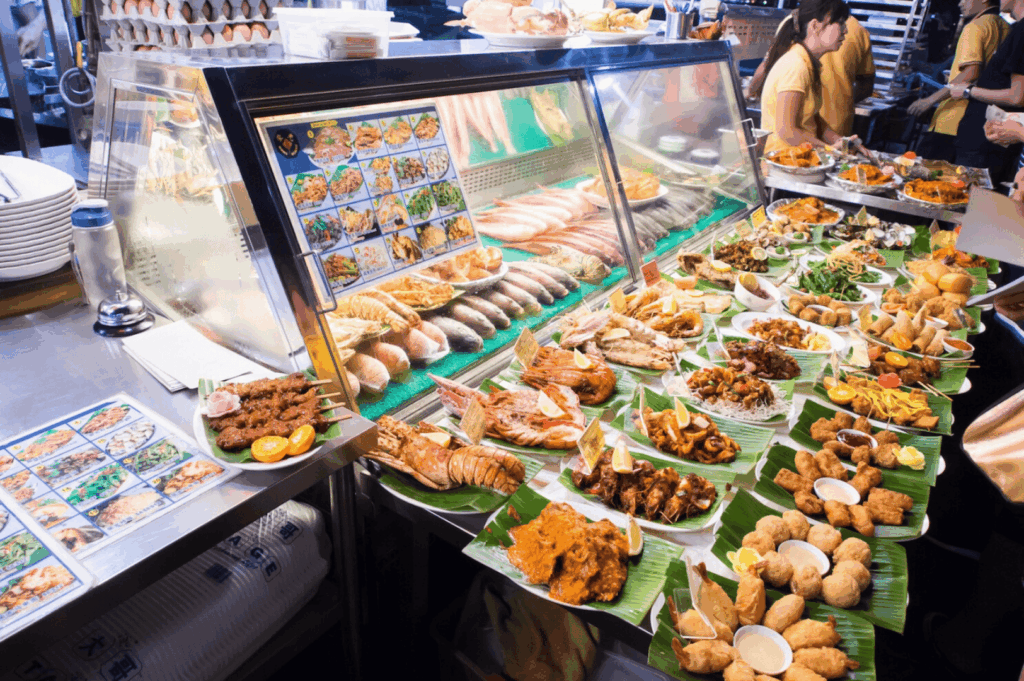
Navigating Singapore’s hawker centers with special dietary needs is possible, even as a foreigner. Look for stalls that advertise vegetarian or vegan options; Indian food stalls are great for this. Halal certified food centre options are plentiful, especially at Tiong Bahru and other big centers. If you have allergies, communicate clearly—many local dishes contain nuts or seafood. For major health requirements, such as managing allergies in your expat package’s health insurance, it’s worth researching or bringing an interpretive card just in case.
Budget and Pricing Guide
Cost is a huge advantage at hawker centres—expect to pay between S$4 and S$8 per meal, making affordable dining in Singapore a reality. Drinks are cheap, and sharing dishes lets you sample even more. Compare this to dining out at other restaurants, and you’ll see why this is a beloved part of Singapore’s expat and local life alike.
Practical Tips for First-Timers
- Bring cash, tissues, and perhaps hand sanitizer.
- Dress casually—open air food courts get hot and busy, and you’ll be more comfortable enjoying delicious food in relaxed attire.
- Remember the weather: Singapore is humid, and hawker centres are covered but open to the elements.
- Use hawker centres as social venues: It’s where new friends are made, and you’ll get to know the rhythms of expat life over shared plates of noodles or satay.
- Factor in extras: School fees, health insurance, employment pass status, and property location may all influence which centres you visit and when; those at central locations are great for meetings and post-work gatherings.
Conclusion
Mastering Singapore’s hawker centre scene is a rite of passage for every expat. Beyond the delicious local dishes, it’s about connection: with the city, with new friends, and with Singapore’s unique hawker culture—a pillar of “home away from home” in this country. Each visit offers a new taste, a new tip, and a deeper link to Singapore’s identity, making your expat journey all the richer.
So when you next find yourself moving abroad or searching for that must visit spot, remember this hawker center guide: Eat boldly, queue patiently, make friends, and savour every bite. Welcome to a city—and a world—of flavour.
Looking for more everyday essentials? Don’t miss our guide to navigating Singapore supermarkets—perfect for expats who want to shop smart, eat well, and experience local life beyond the hawker stalls.

